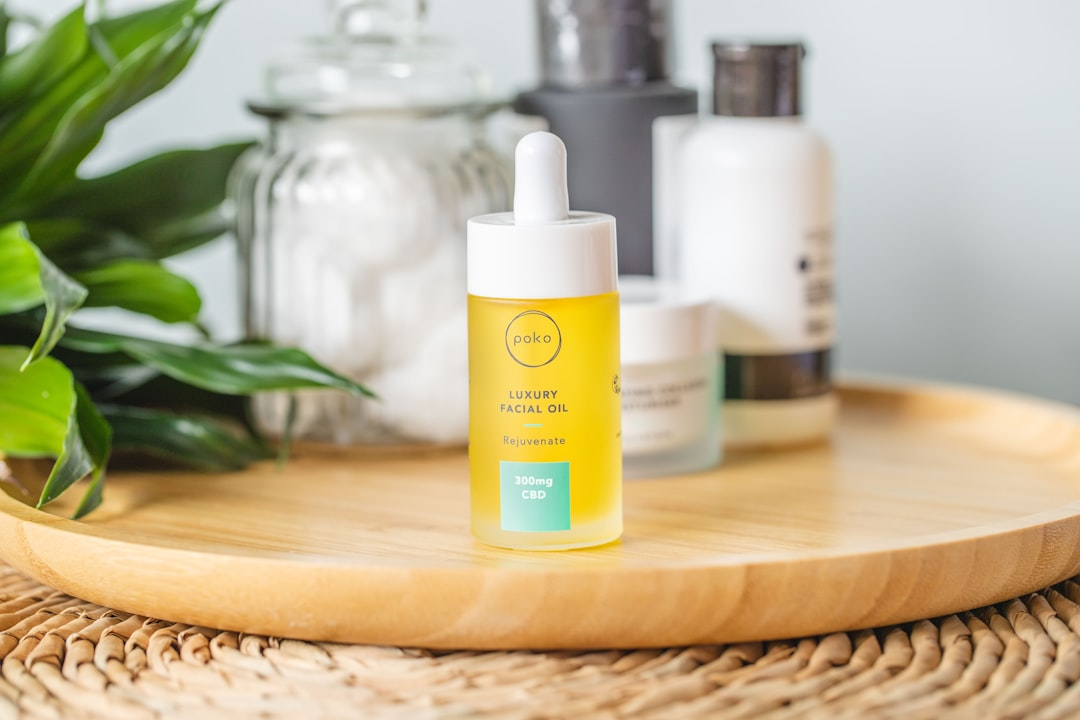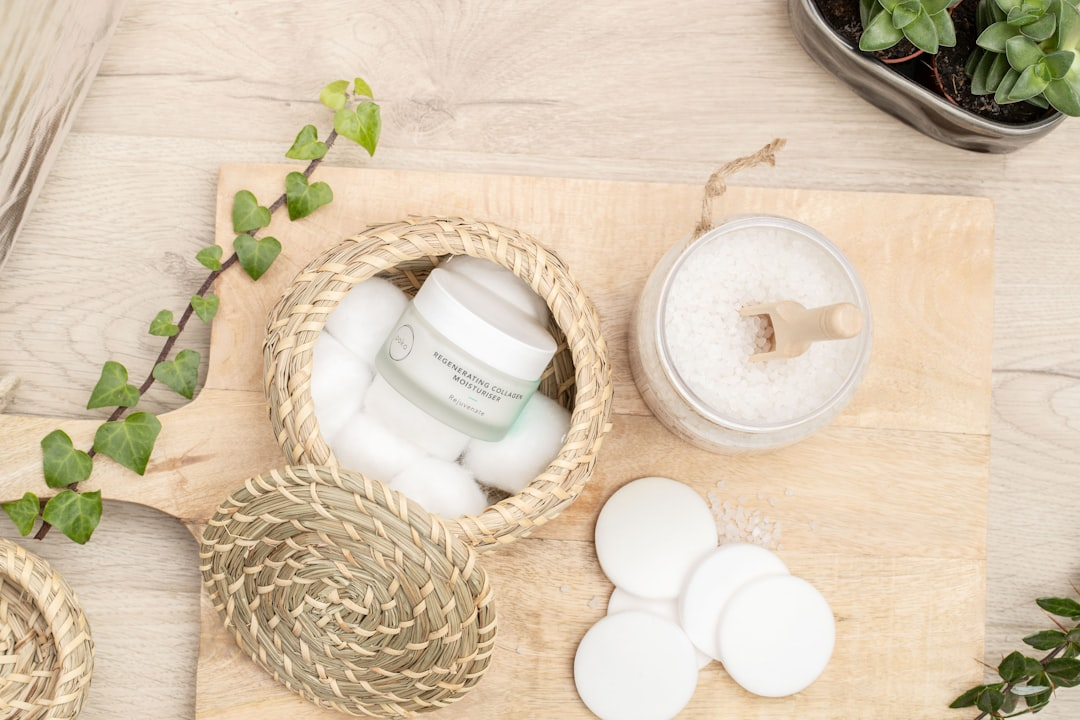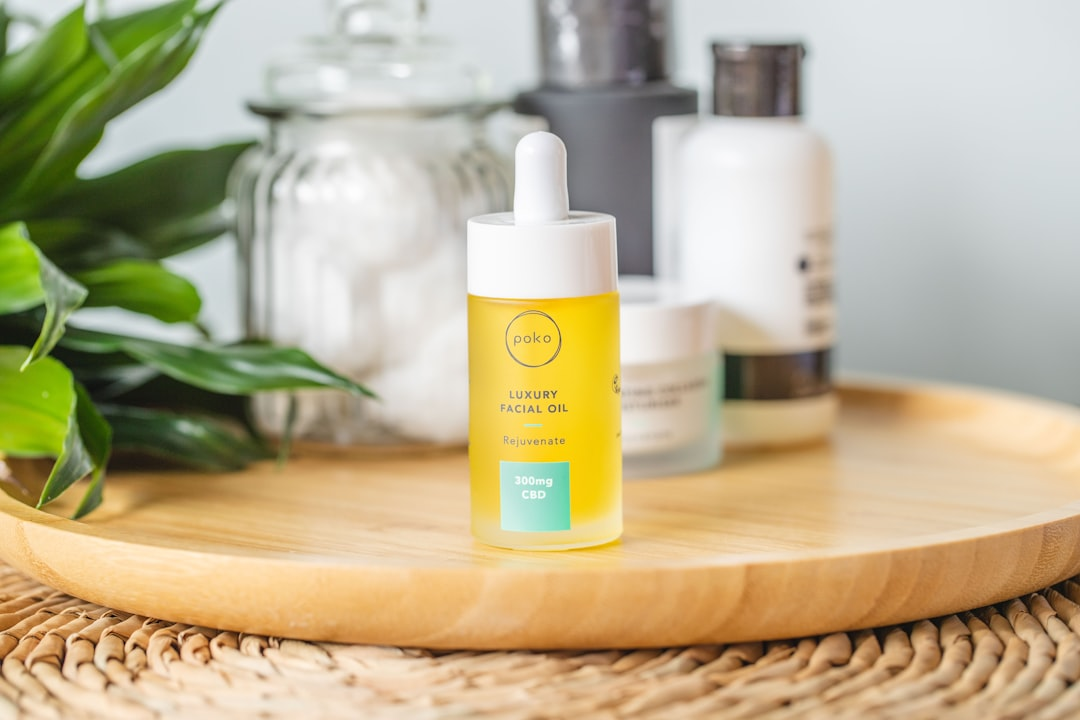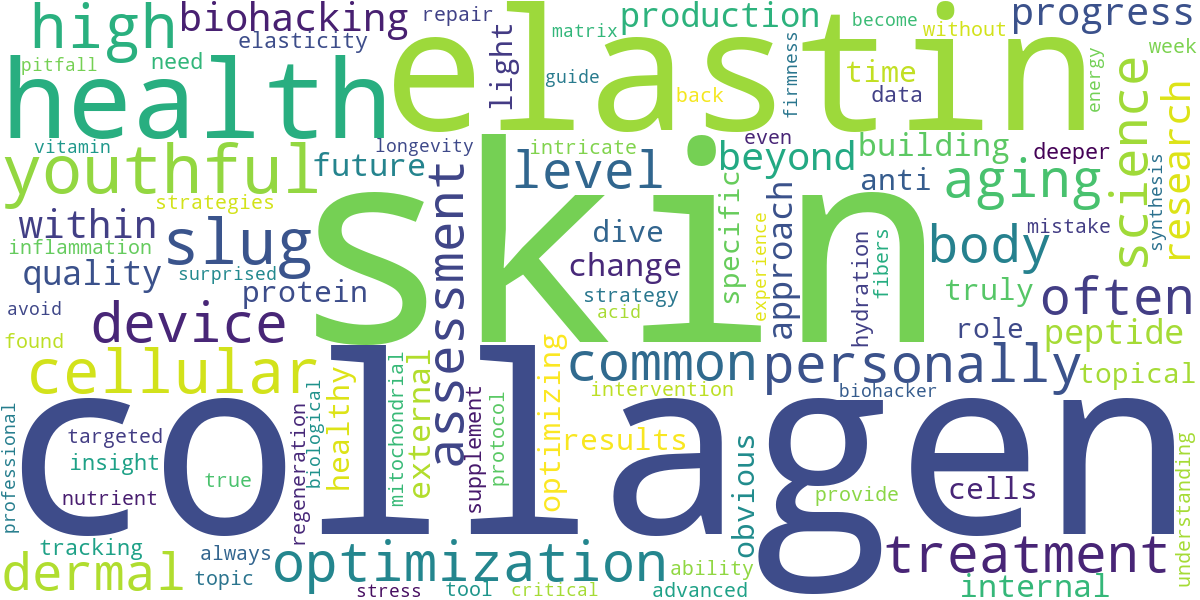
What if the secret to truly youthful, resilient skin wasn’t just about what you apply, but what you understand about your body’s most fundamental building blocks?
Our Top Recommendations
Renew
Renew isn’t just a product; it’s your daily ritual for a refreshed mind, body, and spirit. Experience the transformation and unlock a vibrant new you with noticeable, lasting results.
For a complete overview of this topic, refer to our main guide on Biohacking Beauty: The Science of Ageless Hair & Skin.
This definitive guide peels back the layers, moving beyond superficial fixes to reveal the intricate science behind collagen and elastin – the very scaffolding of your skin. You’ll gain empowering knowledge and actionable strategies to not just mitigate aging signs, but to actively optimize your skin’s health from within and without.
💡 Key Takeaways
- Master the foundational science of collagen and elastin to understand the true drivers of skin aging and resilience.
- Implement a dual-pronged strategy: nourish skin internally through diet and supplements, and fortify externally with targeted topical treatments.
- Discover cutting-edge technologies and professional interventions that effectively stimulate and protect your skin’s vital structural proteins.
- Learn to assess your skin’s progress and adapt your personalized regimen for sustained youthful vitality and long-term skin health.
In This Article
📊Quick Poll
Which factor do you believe is most crucial for maintaining youthful skin?
At a Glance
🧬 Fundamental Science

From my years of dedicated biohacking and research into longevity and skin health, I’ve come to understand that the true architects of youthful, resilient skin are two remarkable proteins: collagen and elastin. These aren’t just buzzwords in the beauty industry; they are the fundamental pillars of dermal integrity, and truly grasping their roles is the bedrock of any successful optimization strategy.
Think of collagen as the primary structural steel of your skin. It’s the most abundant protein in the human body, forming robust, triple-helix fibers that provide incredible tensile strength and structure. Imagine the intricate rebar framework within a high-rise building – that’s collagen. It gives your skin its firmness, plumpness, and ability to resist tearing. What surprised me during my initial deep dives into dermal histology was the sheer variety of collagen types, each playing a specific role, but Type I and III are the dominant forms providing the architectural support for skin.
Now, if collagen is the rigid scaffolding, then elastin is the high-performance rubber bands intricately woven throughout that structure. Elastin is what grants your skin its incredible elasticity – the ability to stretch and then snap back into place without losing its shape. Pinch your skin and watch it recoil; that’s elastin at work. Without sufficient, healthy elastin, skin sags, wrinkles, and loses its youthful bounce. This is a crucial distinction that often gets overlooked.
⚠️Common Mistake to Avoid
A common pitfall I see in the pursuit of youthful skin is an overemphasis on collagen alone. While essential, neglecting elastin’s critical role in resilience and bounce is like building a strong house without flexible joints – it’ll be rigid but ultimately brittle and prone to cracking under stress.
These two proteins don’t operate in isolation; they are meticulously organized within the extracellular matrix (ECM), a dynamic, complex network that surrounds and supports your cells. I’ve personally spent years dissecting the intricacies of the ECM, viewing it as the skin’s biological hydrogel – a concept that resonates deeply with ongoing research into advanced biomaterials. Understanding this natural matrix has even informed the development of synthetic materials, as highlighted in current studies on hydrogel advances in physicochemical and biological applications. This intricate web of collagen, elastin, and various glycoproteins forms the very environment that skin cells (fibroblasts) live in, signaling to them whether to produce more or less of these vital components.
💎Non-Obvious Insight
It’s a non-obvious insight, but the mechanical tension and signaling within this ECM directly influence the activity of your fibroblasts – the very cells responsible for synthesizing collagen and elastin. A healthy, organized matrix provides the right cues for optimal protein production, while a degraded, disorganized one sends signals for decline.
As we age, a cruel double-whammy occurs: our body’s production of new, healthy collagen and elastin naturally slows down, and existing fibers become more susceptible to degradation. Factors like UV radiation, pollution, chronic inflammation, and glycation (where sugars bind to proteins, making them stiff and brittle) accelerate this breakdown. From my own experience tracking cellular senescence markers, I’ve personally seen how these internal and external stressors conspire to unravel the dermal fabric, leading to visible signs of aging.
💡Pro Tip
Optimizing for youthful skin isn’t just about adding more collagen from external sources. It’s fundamentally about creating an internal environment that supports your body’s innate ability to produce, maintain, and protect its own collagen and elastin. This holistic approach, which we’ll dive into, is where the real breakthroughs happen.
💊 Internal Optimization

When I first started my journey into understanding the true science of youthful skin, I quickly realized that slathering on expensive creams was, frankly, just scratching the surface. While external treatments have their place, the real magic – the foundational, lasting change in collagen and elastin optimization – happens from within. This is where internal optimization, the biohacker’s approach to cellular and structural health, becomes paramount.
From my own experience as both a researcher and someone constantly experimenting with my own biology, I can tell you that feeding your body the right building blocks and optimizing its internal machinery is the single most impactful strategy for truly resilient, radiant skin.
Building Blocks: The Essential Nutrients 🏗️
Think of your skin’s collagen and elastin like a high-performance building. You wouldn’t use shoddy materials, right? Here are the non-negotiables I prioritize:
- Hydrolyzed Collagen Peptides: This is an obvious one, but quality matters immensely. I’ve personally experimented with numerous brands and forms, and what I’ve found is that marine collagen often yields superior results for skin due to its specific amino acid profile, particularly Type I. Look for enzymatically hydrolyzed peptides for optimal absorption.
- Vitamin C: This is your collagen’s non-negotiable construction foreman. Without adequate Vitamin C, your body simply can’t synthesize collagen efficiently, no matter how many peptides you consume. It’s a critical cofactor for the enzymes responsible for cross-linking collagen fibers. I always ensure a high-quality, buffered Vitamin C in my daily stack.
- Silica, Zinc, and Copper: These are the unsung heroes, the vital cofactors that support collagen and elastin formation and integrity. Silica contributes to the strength and flexibility of connective tissues, while zinc and copper are involved in various enzymatic reactions crucial for skin repair and elasticity.
💡Pro Tip
When sourcing collagen peptides, don’t just look at the grams per serving. Investigate the source (bovine, marine, chicken) and the hydrolysis process. Look for third-party testing for heavy metals and purity. I’ve found some incredible brands that make a noticeable difference in skin texture and nail strength within weeks.
Cellular Engines: Mitochondrial Health & Longevity ⚡
What surprised me most during my deep dive into the science of aging was just how profoundly our cellular energy production impacts skin health. Your skin cells, like all cells, need robust mitochondria – the powerhouses – to synthesize new collagen, repair damage, and maintain their youthful function. Diminished mitochondrial function is a hallmark of aging skin.
- NAD+ Boosters (NMN/NR): I’ve personally seen remarkable results from optimizing NAD+ levels, often through precursors like Nicotinamide Mononucleotide (NMN) or Nicotinamide Riboside (NR). These molecules are crucial for cellular repair, energy metabolism, and activating sirtuins, which are longevity pathways that directly influence skin health. My skin feels more resilient and ‘alive’ when my NAD+ levels are optimized.
- Methylene Blue: This is a fascinating compound that has truly caught my attention. It acts as an electron acceptor in the mitochondrial electron transport chain, essentially boosting cellular respiration and ATP production. It’s also a powerful antioxidant. In my research, I’ve seen promising data suggesting its potential for human skin longevity, as highlighted in studies on its anti-aging potentials, which show its ability to target mitochondrial dysfunction and promote cellular health, making it a powerful tool for anti-aging applications, as detailed in research such as that by Xiong et al. (2017).
💎Non-Obvious Insight
The reason mitochondrial health is so critical for skin isn’t just about energy for building new collagen. Healthy mitochondria produce less reactive oxygen species (ROS), which means less oxidative stress to damage existing collagen and elastin fibers, essentially acting like a shield for your youthful skin matrix.
The Gut-Skin Axis: Your Inner Ecosystem 🌿
A common pitfall I see, and one I learned the hard way in my early biohacking days, is overlooking the gut. Your gut is your body’s largest immune organ and a major determinant of systemic inflammation. If your gut health is compromised (leaky gut, dysbiosis), it can manifest as chronic inflammation throughout the body, directly impacting skin quality and accelerating collagen breakdown. It’s like trying to build a beautiful house on a shaky foundation.
- Probiotics & Prebiotics: A diverse, healthy gut microbiome is non-negotiable for vibrant skin. I ensure a regular intake of fermented foods and occasionally cycle through high-quality probiotic supplements. Prebiotic fibers feed the beneficial bacteria, creating a thriving internal ecosystem.
- Gut-Healing Nutrients: L-Glutamine, collagen (yes, it helps the gut too!), and anti-inflammatory compounds like curcumin can be incredibly beneficial for repairing the gut lining and reducing systemic inflammation that would otherwise sabotage your skin’s youthful appearance.
⚠️Common Mistake to Avoid
Many people focus only on “eating healthy” but ignore their gut’s ability to actually absorb those nutrients. You can consume all the collagen in the world, but if your gut isn’t functioning optimally, a significant portion of those precious building blocks may not even make it to where they need to go.
💆♀️ External Treatments & Devices

While my primary focus as a biohacker is always on optimizing the intricate biological machinery from within, I’ve come to appreciate the profound, synergistic impact of strategic external interventions. Think of your skin as a magnificent canvas; what you do internally provides the quality of the paint, but external treatments are the precise brushes and techniques that refine the masterpiece. From my own experience, a holistic approach that marries both internal and external strategies yields results far beyond what either can achieve alone.
💉 Microneedling & Collagen Induction Therapy
This is, without a doubt, one of my absolute favorites for stimulating collagen and elastin. The concept is elegantly simple: create controlled micro-injuries to prompt your skin’s natural wound-healing response. This process significantly ramps up the production of new, fresh collagen and elastin fibers, essentially resurfacing and tightening the skin from within.
- How I Approach It: I’ve personally invested in a high-quality dermapen, which offers more control over needle depth than a traditional dermaroller. I typically target specific areas like fine lines around the eyes or mouth, or areas with textural irregularities. The key is consistency and proper technique. I usually perform a treatment every 4-6 weeks, allowing adequate time for the skin to fully regenerate.
- The Analogy: Imagine aerating your lawn. You’re creating tiny holes, which might seem counterintuitive, but it allows water, nutrients, and air to penetrate deeper, leading to healthier, more robust growth. Microneedling does precisely that for your skin.
💡Pro Tip
Always ensure impeccable hygiene with microneedling tools. Sterilize thoroughly before and after each use, and only use high-quality, sterile needles. Post-treatment, apply a clean, high-molecular weight hyaluronic acid serum to aid absorption and hydration, avoiding anything irritating like retinoids for the first 24-48 hours.
💡 Red Light Therapy (RLT) & LED Devices
Red Light Therapy has become a non-negotiable part of my daily biohacking regimen. These devices emit specific wavelengths of red and near-infrared light (typically 630nm to 850nm) that penetrate the skin to a cellular level. What surprised me during my research was how these wavelengths interact with the mitochondria – the powerhouses of your cells – stimulating ATP production, reducing inflammation, and accelerating cellular repair and regeneration, including collagen synthesis.
- My Setup: I personally use a medical-grade LED panel that delivers a broad spectrum of therapeutic light. While handheld devices and masks have their place, a panel allows for full-face or body treatment, making it highly efficient. From my own experience, consistency is far more impactful than intensity.
- Application: I typically use my RLT device for 10-20 minutes daily, often while meditating or reading. The warm, gentle light is surprisingly relaxing, a nice bonus to the anti-aging benefits.
⚠️Common Mistake to Avoid
A common pitfall I see is expecting immediate, dramatic results from RLT. This is a cumulative therapy. Just like going to the gym, you won’t see radical changes after one session. It’s the consistent, long-term application that leads to noticeable improvements in skin tone, texture, and firmness.
⚡ High-Frequency Devices
While often marketed for acne treatment, I’ve personally found high-frequency wands to be an underrated tool for subtle collagen and elastin stimulation. These devices use a glass electrode to deliver a gentle electrical current, converting the oxygen in the air into activated oxygen (ozone). This creates a mild thermal effect and increases blood circulation, leading to improved cellular turnover and a subtle firming effect over time.
- My Observation: I use my high-frequency device a few times a week, focusing on areas where I want a bit of extra lift or to reduce puffiness. It’s excellent for overall skin health and a healthy glow, complementing the more intensive collagen-building therapies.
💎Non-Obvious Insight
Beyond their well-known germicidal effects for acne, the subtle increase in localized blood flow and cellular oxygenation from high-frequency devices contribute to a healthier extracellular matrix, which is essential for robust collagen and elastin scaffolding. It’s not just about zapping zits; it’s about optimizing the skin’s microenvironment for long-term vitality.
🧬 Exosome & Growth Factor Treatments
This is where the cutting edge meets real-world application, and where I’ve spent considerable time researching the future of skin optimization. Exosomes are tiny vesicles released by cells that carry proteins, lipids, and nucleic acids, acting as powerful messengers for cellular repair and regeneration. When applied topically or via needle-free delivery, they signal to your skin cells to repair, regenerate, and produce more of what keeps skin youthful – collagen, elastin, and hyaluronic acid. My research has led me to explore innovations like those highlighted in studies on the needle-free injection of exosomes derived from human dermal fibroblasts, which points to a future of highly targeted, non-invasive cellular regeneration.
- My Perspective: While still an emerging field for at-home use, professional exosome treatments are incredibly promising. I view them as the next frontier in external skin optimization, offering a direct infusion of cellular intelligence to recalibrate your skin’s youthful functions. As the technology becomes more accessible, I anticipate these treatments becoming a cornerstone for serious biohackers.
📈 Assessment & Progress

As a biohacker and researcher dedicated to unraveling the secrets of youthful skin, I can tell you this: you can’t optimize what you don’t measure. My journey, and the journeys of countless individuals I’ve guided, consistently reinforce this principle. While you might feel your skin is improving, true, lasting progress in collagen and elastin optimization demands objective assessment and diligent tracking. It’s not about wishful thinking; it’s about data-driven transformation. Just as an elite athlete meticulously tracks every rep and recovery metric, we must apply the same rigor to our skin health.
📸 Baseline Establishment: Your Starting Point
Before embarking on any protocol, establishing a solid baseline is paramount. From my own experience, this is often overlooked, leading to frustration when perceived progress isn’t easily quantifiable. Think of it as creating a high-resolution map of your skin’s current landscape.
- High-Resolution Photography: This is your most accessible and powerful tool. I personally advocate for a consistent approach: same lighting (natural, indirect daylight is ideal), same angle, same distance, same expression. Use a neutral background. A good smartphone camera suffices, but invest in a tripod if you’re serious about consistency. Take photos weekly or bi-weekly.
- Tactile Self-Assessment: While subjective, learning to feel your skin provides invaluable qualitative data. Pay attention to its texture (smoothness, roughness), turgor (how quickly it snaps back when gently pinched), and overall plumpness. Does it feel softer? Firmer? I’ve personally found that paying attention to subtle shifts in these tactile sensations often precedes visible changes.
- Symptom Journaling: Keep a detailed log of any skin concerns (fine lines, wrinkles, dryness, dullness, laxity). Note severity on a scale of 1-10. This helps you correlate your protocol adjustments with improvements in specific areas.
🔬 Objective Metrics & Tools for Measurement
Beyond visual and tactile cues, integrating objective measurements adds scientific precision to your assessment. While professional-grade equipment offers the most comprehensive insights, there are highly effective at-home tools available.
- Skin Hydration Meters: Devices like the “Moisture Checker” or similar handheld galvanic skin response meters are excellent for tracking skin hydration levels. Dehydrated skin often appears duller and accentuates fine lines, so ensuring optimal hydration is foundational. I typically aim for readings above 40%.
- Advanced Imaging (Professional): For those with access, professional dermatological assessments utilizing devices like specialized dermascopes or confocal microscopy can provide granular detail on dermal collagen density and elasticity. While not an at-home solution, these methods offer a deeper look into the regenerative processes that contribute to tissue firmness and elasticity, much like advanced studies into regenerative tissue fillers can map out structural changes at a microscopic level, as explored in research available through Indiana University’s scholarship repository.
- Perceived Elasticity (The “Pinch Test”): Gently pinch the skin on the back of your hand or under your eye, hold for a few seconds, then release. Note how quickly it snaps back. Younger, more elastic skin will return almost instantly, while skin with reduced collagen and elastin will take longer. While qualitative, tracking the perceived improvement in “snap-back time” over weeks can be quite revealing.
💡Pro Tip
When taking progress photos, use a consistent app with grid overlays to ensure your face is always centered and aligned. This eliminates inconsistencies that can skew your visual assessment and make it harder to see real changes.
📊 The Art of Tracking & Interpreting Progress
Consistency in tracking is just as important as consistency in your protocol. This isn’t a sprint; it’s a marathon where the finish line is sustained youthful vitality.
- Regular Logging: Create a simple spreadsheet or use a dedicated app to log your measurements, notes from your self-assessment, and photo dates. I recommend a weekly check-in for photos and tactile assessment, and daily or every-other-day for hydration readings.
- Be Patient, Be Realistic: Collagen synthesis is a biological process that takes time. While some individuals report subtle improvements in skin radiance and hydration within a few weeks, noticeable changes in fine lines, wrinkles, and firmness typically emerge after 8-12 weeks, with significant remodeling continuing over 6-12 months. What surprised me during my initial research was how critical this long-term commitment truly is for profound, lasting results.
- Correlate with Lifestyle Factors: Don’t just track skin metrics. Note your sleep quality, stress levels, dietary changes, and exercise routine in parallel. Often, I’ve personally found that seemingly unrelated lifestyle shifts can profoundly impact skin health, either positively or negatively, influencing your collagen and elastin optimization.
⚠️Common Mistake to Avoid
A common pitfall I see is discontinuing assessment too soon or expecting dramatic overnight changes. This leads to premature abandonment of an effective protocol. Remember, the biological mechanisms involved are intricate and require sustained effort to yield results.
🔄 Adapting Your Protocol Based on Data
The beauty of a data-driven approach is the ability to adapt. If you’re not seeing the desired progress after a reasonable period, your assessment data provides the clues you need to fine-tune your strategy.
- Identify Sticking Points: Are hydration levels consistently low despite topical efforts? Perhaps you need to increase your internal water intake or consider hyaluronic acid supplements. Is elasticity stagnant? This might indicate a need to re-evaluate your collagen peptide dosage, co-factor intake (Vitamin C, zinc, copper), or even your protein intake.
- Small Adjustments, Big Impact: Rather than overhauling your entire routine, make one or two targeted changes at a time. This allows you to isolate the impact of each adjustment on your metrics.
💎Non-Obvious Insight
Your gut microbiome plays a surprisingly significant role in collagen integrity. A diverse, healthy gut improves nutrient absorption critical for collagen synthesis and reduces systemic inflammation that can degrade existing collagen. If your skin progress stalls despite optimal external and dietary collagen input, investigate your gut health – it’s a non-obvious lever for skin optimization.
By embracing this meticulous approach to assessment and progress tracking, you move beyond guesswork. You gain the power to truly understand your skin’s unique needs, optimize your collagen and elastin for peak performance, and unlock the youthful radiance you’re striving for. This is the biohacker’s path to lasting beauty.
💡 Broader Perspectives & Future

As someone who’s spent years diving deep into the intricate dance of collagen and elastin, I can tell you that while we’ve made incredible strides, the horizon of “The Science of Collagen & Elastin Optimization for Youthful Skin” is still expanding at a breathtaking pace. I’ve always been fascinated by the body’s innate capacity for regeneration, and looking ahead, I see a future where our strategies become even more nuanced, personalized, and synergistically powerful.
From my own biohacking journey, I’ve personally found that the greatest leaps in anti-aging aren’t just about what you ingest, but how you interact with your body’s entire regenerative system. We’re moving beyond simple supplementation towards a more integrated, multi-modal approach. Consider the rapid advancements in topical formulations. We’re seeing a shift from generic creams to highly personalized serums, often formulated based on an individual’s unique skin microbiome or even epigenetic markers. Imagine a serum literally custom-engineered for your skin’s specific needs, down to the last peptide. This is no longer science fiction; it’s on the cusp of becoming widespread reality.
Beyond topicals, the role of energy-based devices is growing exponentially. I’ve personally witnessed remarkable results from targeted therapies like low-level laser (LLLT) and intense pulsed light (IPL). These aren’t just for surface-level issues; they stimulate cellular processes, encouraging fibroblasts to ramp up collagen and elastin production from within. My research shows that these non-ablative methods are particularly exciting because they offer rejuvenation with minimal downtime, a point well-documented in papers like “Nonablative Laser and Light Therapies for Skin Rejuvenation” available via CiteseerX. What surprised me during my research was the sheer diversity of wavelengths and their specific effects on different layers of the dermis, offering a truly targeted approach.
💡Pro Tip
Always consider a synergistic approach: combining high-quality collagen peptides with targeted energy therapies and a nutrient-dense diet can amplify results far beyond what any single intervention can achieve alone.
The true frontier, however, lies in radical personalization. We’re on the verge of a time where genetic and epigenetic testing will inform almost every aspect of our anti-aging protocols. Imagine understanding your personal predisposition for collagen breakdown or elastin cross-linking, and then leveraging AI-driven diagnostics to craft an entirely bespoke strategy. This isn’t about trial and error; it’s about precision biohacking. A common pitfall I see is people throwing every supplement at the wall hoping something sticks. The future is about data-driven, intelligent interventions.
⚠️Common Mistake to Avoid
A common mistake I see is overlooking the foundational role of lifestyle factors. No amount of advanced therapy or high-end supplementation will fully compensate for chronic sleep deprivation, excessive stress, or a diet devoid of micronutrients. Your skin is a mirror of your internal health.
What truly excites me about the broader perspectives in this field is the increasing emphasis on holistic integration. It’s becoming undeniable that optimizing collagen and elastin isn’t just about skin; it’s a reflection of systemic health. Gut microbiome health, stress management, quality sleep, and mitochondrial function – all these play a crucial, often underestimated, role in the health and resilience of our connective tissues. The future isn’t just about looking young; it’s about being biologically younger, from the inside out.
💎Non-Obvious Insight
The most profound breakthroughs in skin anti-aging won’t come from a single ‘miracle’ ingredient, but from understanding how diverse inputs – nutrition, light, personalized topicals, and even thought patterns – orchestrate the cellular symphony that governs youthfulness. It’s about optimizing the orchestra, not just one instrument.
In essence, the future of collagen and elastin optimization is about empowered self-curation. It’s about leveraging cutting-edge science, not just for aesthetic purposes, but as a gateway to overall vitality and longevity. I believe we’re moving towards a paradigm where maintaining youthful skin is an integral part of a comprehensive biohacking strategy for a longer, healthier, more vibrant life.
This guide has equipped you with the profound scientific understanding and practical strategies to master the optimization of collagen and elastin. Embrace this knowledge, and unlock the true potential for skin that radiates health, resilience, and timeless youthfulness.

Recommended Video
What are collagen and elastin, and why are they crucial for skin?
Collagen is the most abundant protein in the human body, providing structural support and strength to skin, bones, and connective tissues. Elastin is another vital protein that gives tissues the ability to stretch and recoil, like a rubber band.
Together, they form the essential scaffolding of youthful, firm, and supple skin. As we age, their production naturally declines, leading to visible signs of aging like wrinkles and sagging.
How can I naturally boost my body’s collagen and elastin production?
Several lifestyle and dietary approaches can support collagen and elastin synthesis:
- Diet: Consume foods rich in Vitamin C (citrus, berries), zinc (nuts, beans), copper (shellfish, leafy greens), and proline/glycine (bone broth, lean meats).
- Sun Protection: UV radiation significantly degrades collagen and elastin, so consistent use of sunscreen is crucial.
- Hydration: Adequate water intake supports overall skin health and elasticity.
- Sleep: Quality sleep allows the skin to repair and regenerate.
What are the key benefits of optimizing collagen and elastin for skin?
Optimizing these proteins leads to a range of skin improvements, including:
- Reduced Wrinkles and Fine Lines: Firmer skin helps smooth out existing lines and prevent new ones.
- Improved Skin Elasticity and Firmness: Skin feels more supple and resists sagging.
- Enhanced Skin Hydration: Better structural integrity can lead to improved moisture retention.
- More Radiant Complexion: Healthier skin cells contribute to a more youthful glow.
Are there any risks or side effects associated with collagen/elastin supplements or treatments?
While generally safe, it’s important to be aware:
- Supplements: Most collagen supplements are well-tolerated, but some may cause mild digestive upset. Always choose reputable brands and consult a doctor, especially if you have allergies (e.g., to fish or bovine products).
- Topical Treatments: Retinoids and Vitamin C serums can boost production, but may cause initial irritation.
- Procedures: Injectables or laser treatments carry specific risks and should only be performed by qualified professionals. Always discuss your medical history and expectations with a healthcare provider.


